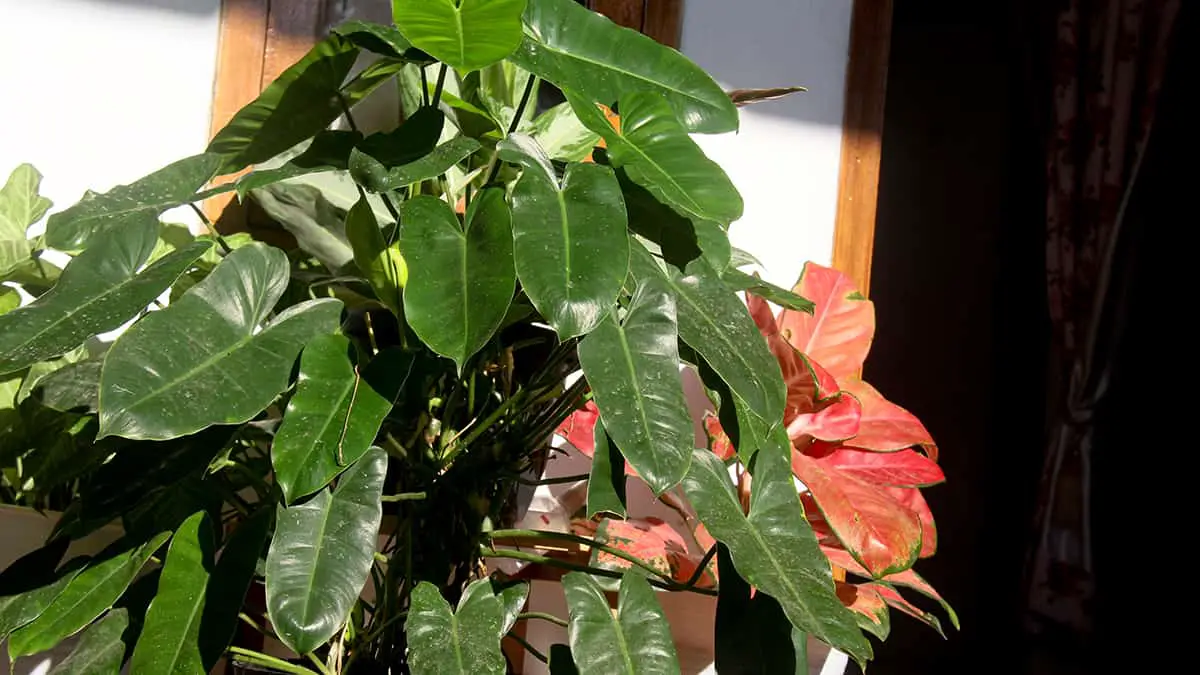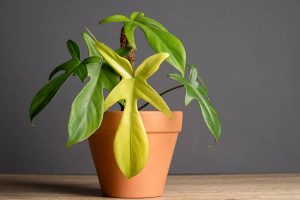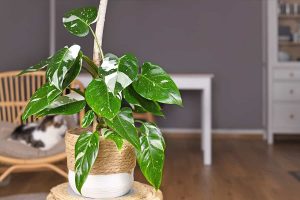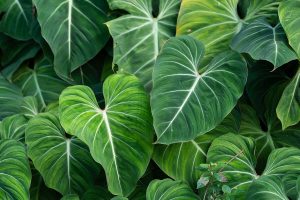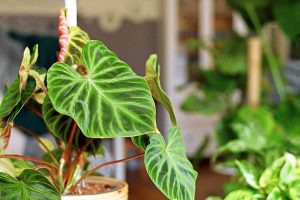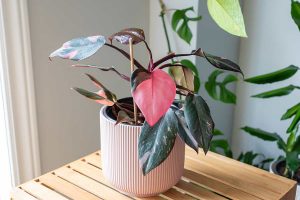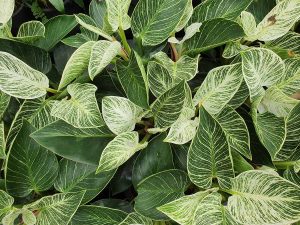If you are a keen gardener in a hot climate or a lover of houseplants, then you likely have at least one philodendron in your collection. These are enormously popular plants because they are relatively easy to care for, are beautiful to look at, and come in a wide range of varieties.
Table of Contents
What are Philodendrons?
Philodendrons are a genus of plants that contain almost 500 different species. Amongst these are trailing plants, climbing plants, upright plants, epiphytic plants, and even philodendrons that grow as shrubs and trees.
Here we take a look at some of the more commonly known philodendrons that you would expect to see growing in gardens and as houseplants, along with the rare and endangered philodendrons that are more likely to be seen in a hobbyists collection.
Common Philodendrons
Philodendron hederaceum
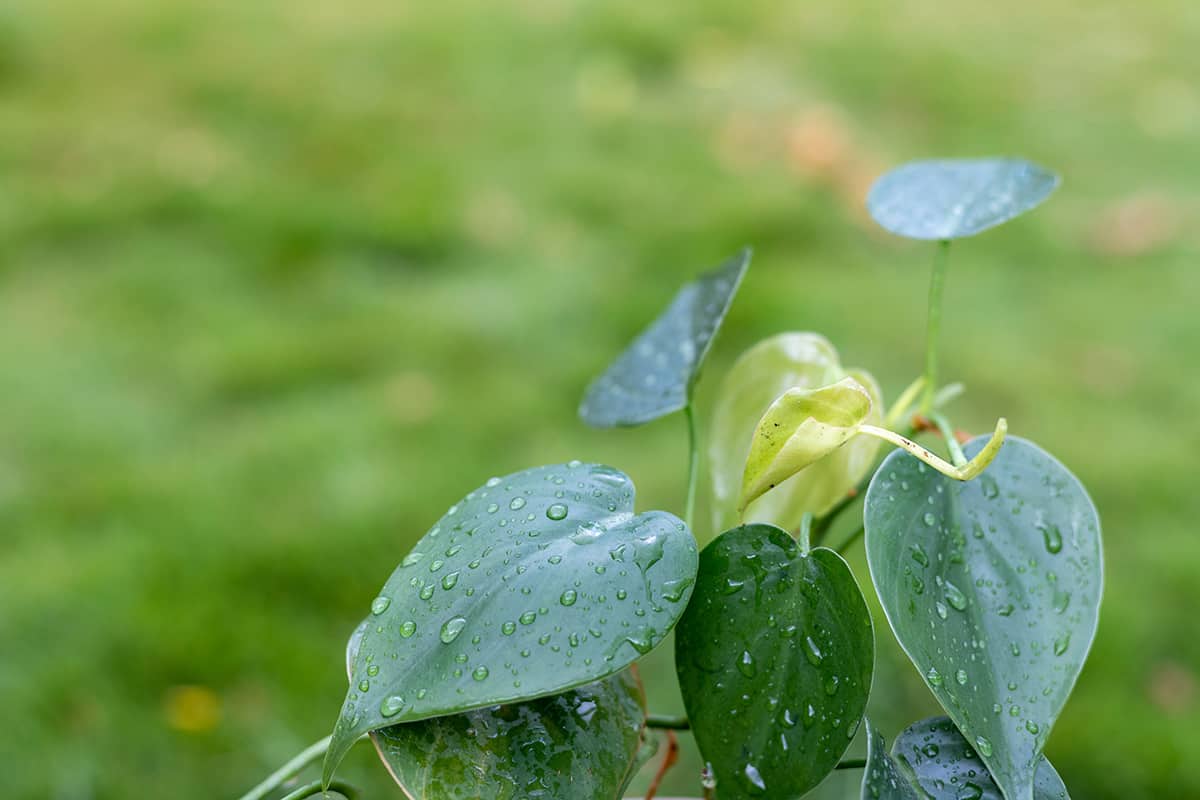
This philodendron plant is widely known as the heartleaf philodendron because of its heart-shaped leaves. This is easily the most popular and common type of philodendron, and it is also one of the most popular types of houseplants on the whole. It is commonly mistaken for the pothos plant because it has a similarly rapid growth habit, trailing vines, and foliage shape.
There are several varieties of the heartleaf philodendron species, but the most popular is the ‘brasil’ variety, which features variegated leaves. The splashes of bright green and yellow against the darker green leaves give this variety a more interesting look that appeals to houseplant fans.
The heartleaf philodendron is a climbing plant in the wild, where it will attach itself to tall trees and grow up the trunks to heights of 100 feet. It is a tropical plant that is native to the Caribbean and Central America, and as such, it thrives as a houseplant in average room temperature.
This plant is almost effortless to care for, which further adds to its popularity because it won’t cause problems even for inexperienced house plant growers. The heartleaf philodendron should be kept in moist, well-draining soil in a position where it can benefit from medium to high indirect light.
This plant is known to tolerate lower light levels and sporadic watering, though this isn’t recommended if you want your plant to remain healthy and have a long life. It prefers moderate to high levels of humidity but can survive in low humidity.
Philodendron erubescens
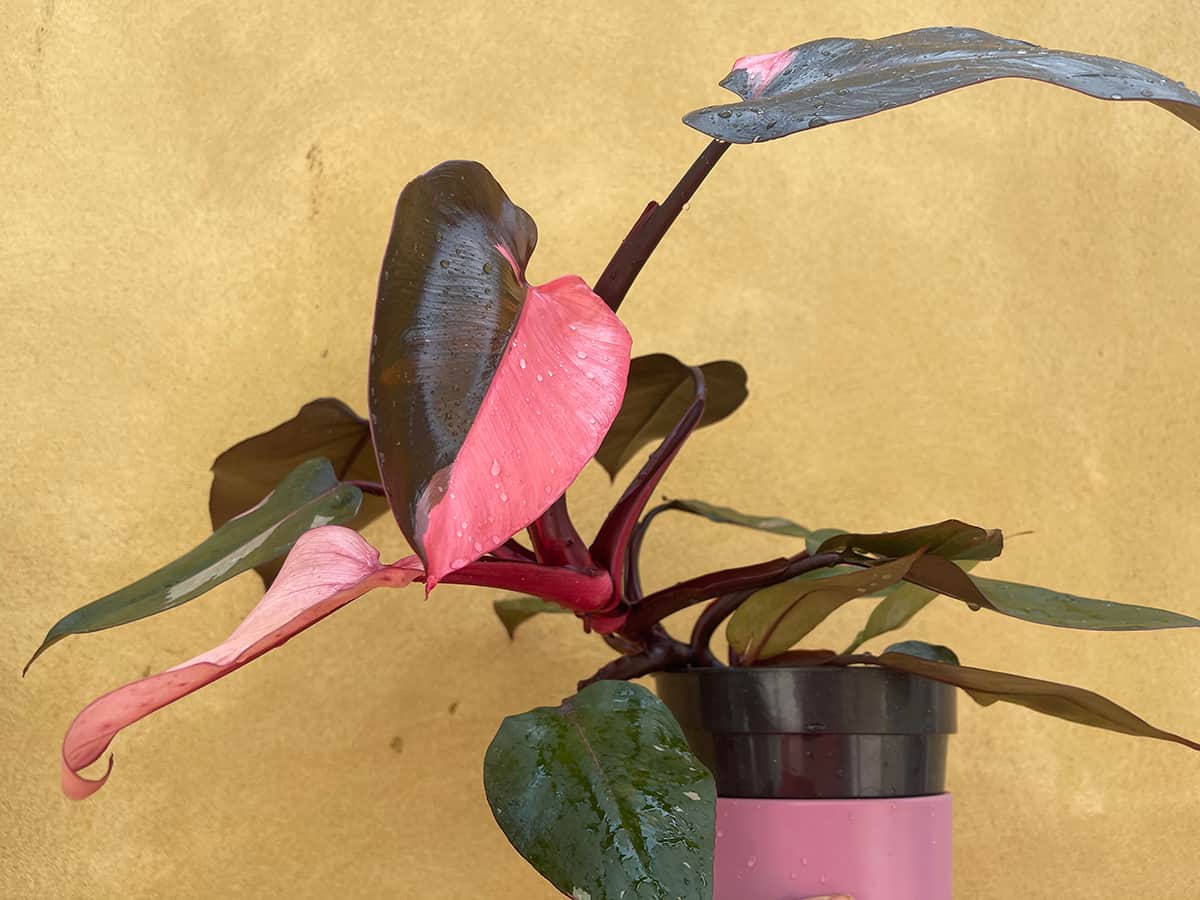
This is the more common version of the ‘pink princess’ philodendron that has become an overnight superstar of the houseplant world. The philodendron erubescens is more commonly known as the blushing philodendron or the red emerald because of the underside of its foliage, which has a rich burgundy color.
These plants are aggressive climbing evergreens in the wild, growing to mature lengths of around 20 feet or 60 feet in exceptional circumstances. However, when grown as houseplants, they have a more moderate growth pattern and will have an upright habit that tops out at around 3 feet.
The blushing philodendron is native to Columbia and therefore is accustomed to warm temperatures. In its natural environment, it grows beneath the canopy of tall trees and is not exposed to direct sunlight. As a result, this plant, when grown as a houseplant, prefers a partially shaded exposure and will suffer from burnt leaves if faced with direct light. It is less tolerant to sporadic watering compared with other types of philodendrons, so be sure to maintain moist soil and avoid letting the roots dry out.
Philodendron bipinnatifidum
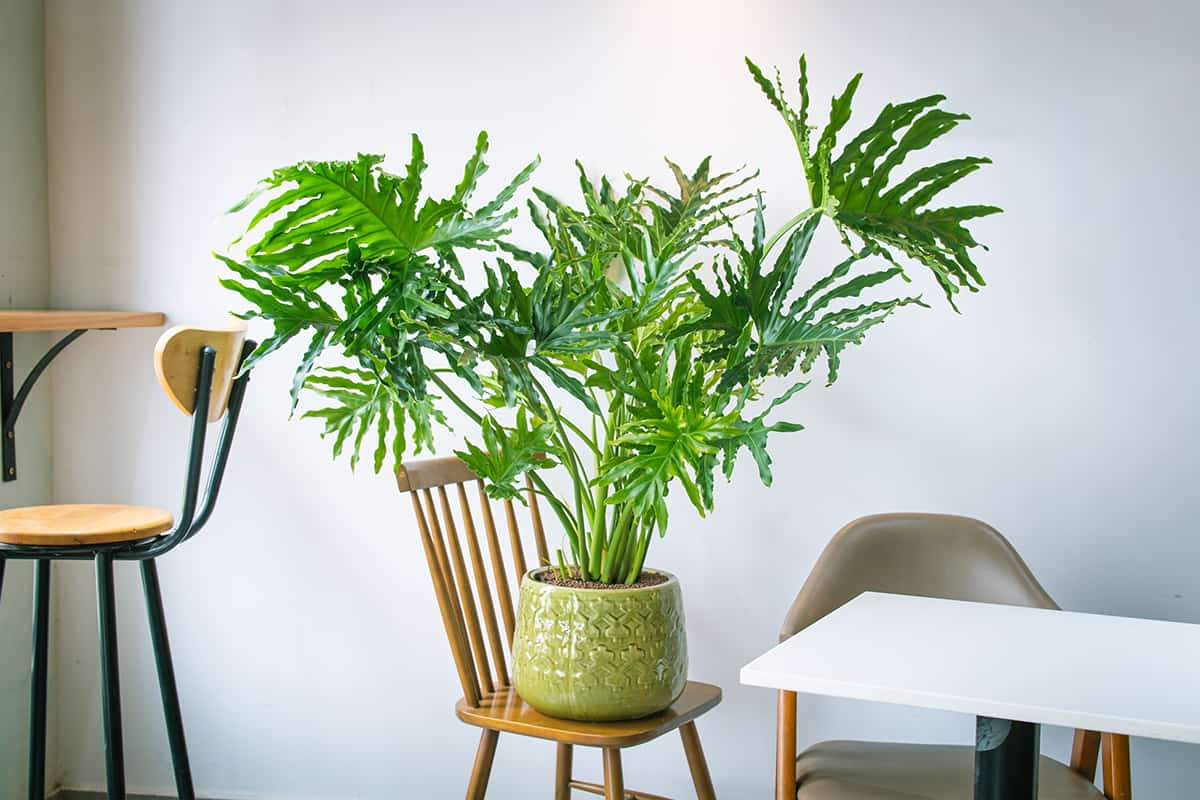
This species of philodendron has large split leaves which can grow over 3 feet in length. In the wild, this philodendron most commonly presents as a shrub, and as such, it is sometimes known as the tree philodendron. Other popular names for this philodendron include horsehead philodendron and panda plant.
It is native to South America, where it generally grows in full sun, but it is also highly adaptable and can grow happily in heavy shade. In its natural environment, the horsehead philodendron will typically grow to heights of 15 feet, though when kept as a houseplant, it will grow no taller than around 5 feet.
As a large plant with giant leaves, this makes a stunning houseplant to fill a vacant corner in a room, and it adds a nice tropical feel to a space. It is easy to care for and can grow quite rapidly in ideal conditions.
Keep the plant in well-draining moist soil with a mixture of direct and indirect bright light. Although this plant tolerates shade well in the wild, it will become leggy without enough light when kept indoors, so ensure it is positioned in a spot with suitable exposure.
Philodendron xanadu
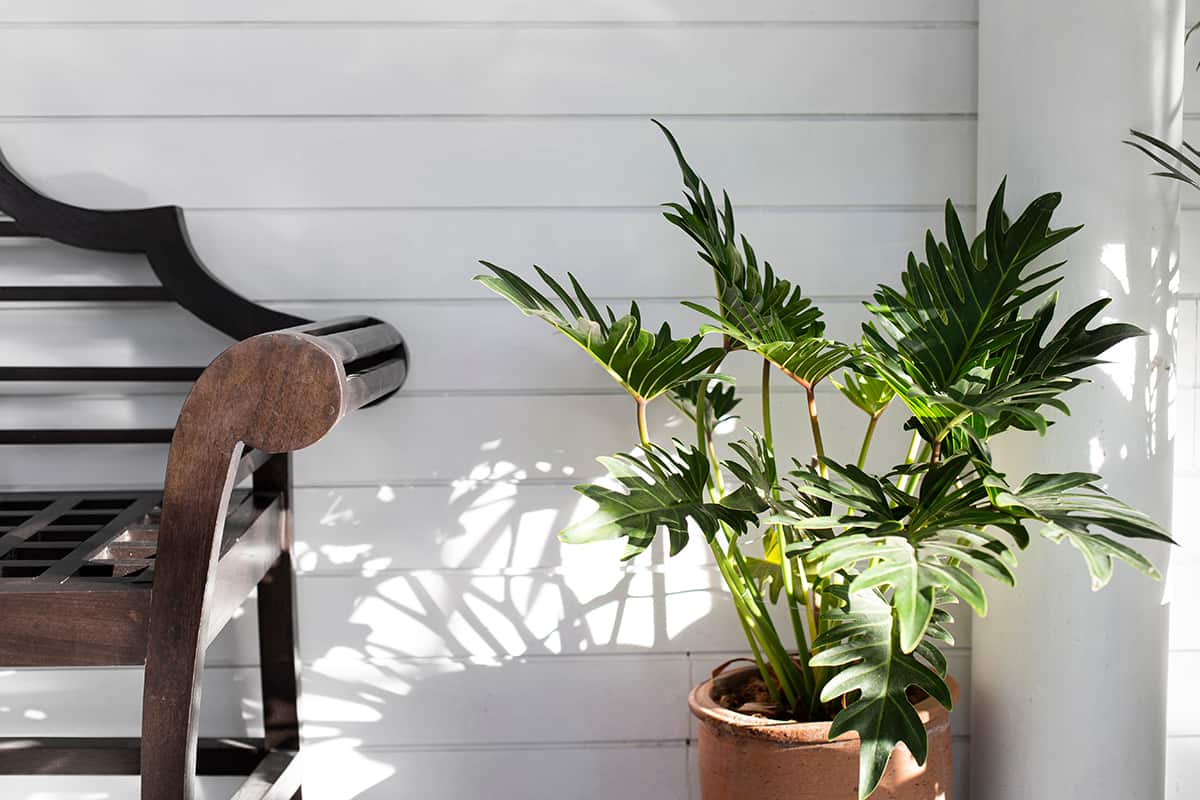
This philodendron makes for a dramatic houseplant with huge split leaves in a glossy green finish. It is native to Brazil, but it has been naturalized in temperate climates around the world, for example, in Australia, the US, and southern Europe.
In its natural environment, the philodendron xanadu grows in dense clumps to heights of 5 feet and widths of 7 feet. When grown as a houseplant, it will more commonly top out at around 3 feet in height and 4 feet in width. Unusually, as this philodendron grows, it becomes wider rather than taller, which makes it a nice choice to fill a horizontal rather than vertical space in a home.
To care for a philodendron xanadu you should provide medium lighting conditions, although this is actually a plant that can thrive in a shaded exposure. The large leaves have a habit of collecting dust, so keep them in good condition by regularly wiping them down with a wet cloth. This plant is toxic to cats and dogs, so it should be kept away from pets who might be tempted to nibble on it.
Philodendron domesticum
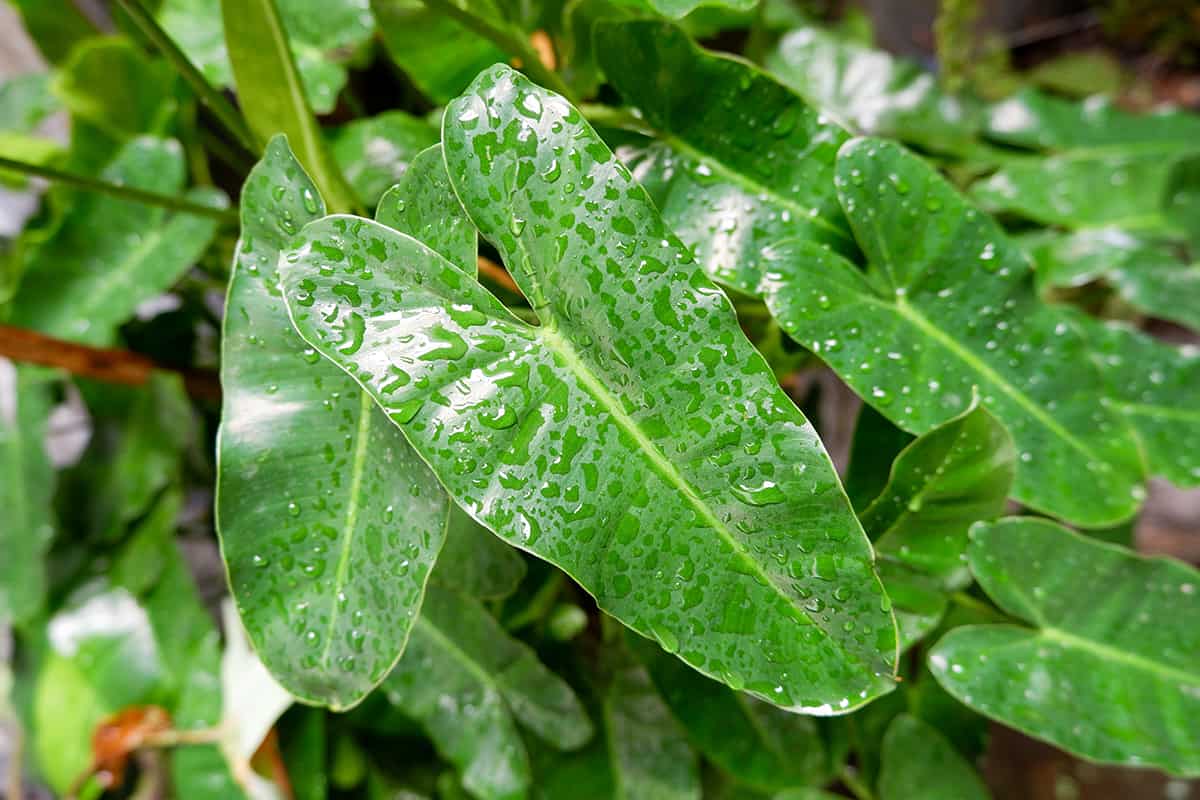
This philodendron is more commonly known as the elephant ear philodendron and the spade leaf philodendron. One look at the large, floppy leaves will tell you exactly how the plant got its name. Each leaf at maturity will have a typical size of 9 inches in width and 22 inches in length when grown in the wild, though the dimensions will be significantly smaller for those grown indoors.
The elephant ear philodendron is a popular houseplant, and like most philodendrons, it is easy to care for. The origin of the plant is unknown, but most information indicates that it is the result of a hybrid. As your elephant ear philodendron grows, the weight of the leaves can cause the stems to bow since they are quite weak. This can be remedied by attaching the stems to stakes.
Philodendron martianum
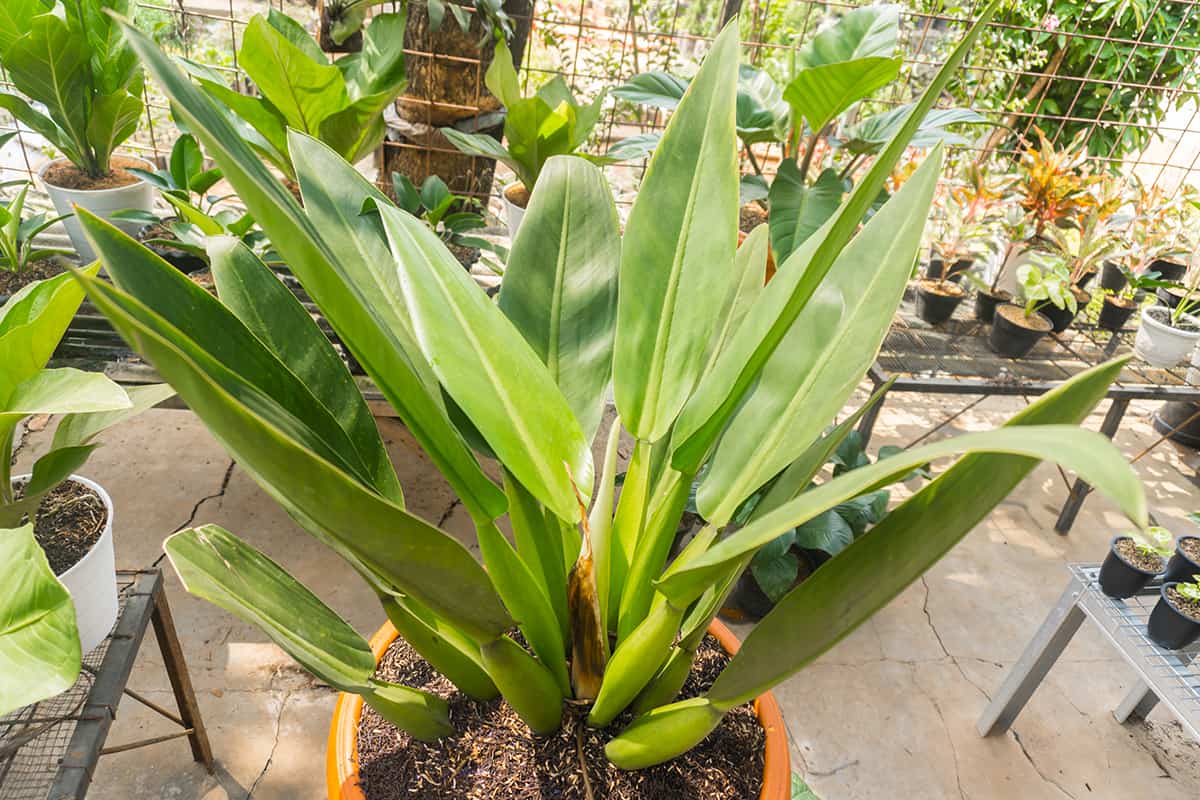
Commonly known as the flask philodendron, this plant has thick waxy lance-shaped leaves in a medium green shade and swollen cylindrical stems. It is native to Brazil, where it can grow to be up to 10 feet tall, but when grown outside of its natural habitat, it is more likely to reach maximum heights of around 2 to 3 feet, with individual leaves having lengths of around 1 to 1.5 feet.
Unlike many common philodendrons, this plant is not a climber or trailer. Instead, it sends out its leaves in an almost rosette-like fashion, and they will curl over slightly at the top to create the look of a bouquet.
Rare Philodendrons
Philodendron patriciae
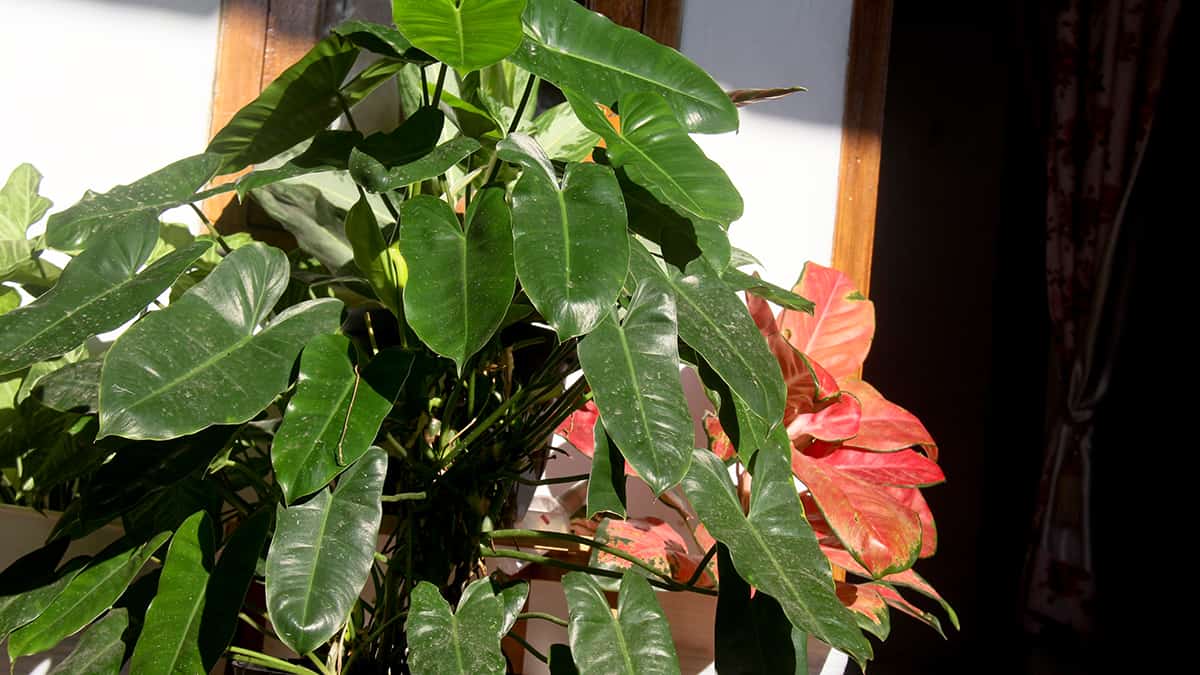
This rare philodendron has pendant-like foliage that hangs down in narrow drops. The leaves are heavily veined which give them an almost pleated look, and they can grow to lengths of almost 4 feet in their natural habitat. The plant hails from Colombian rainforests, and is scarcely found anywhere else, making it extremely rare and highly prized.
The philodendron patriciae was introduced to those of us outside of Colombia by Tom Croat, who is the Curator of Botany at the Missouri Botanical Gardens. He lovingly named the plant after his wife Patricia, of whom he says, “my wife was more responsible for what I collected than anybody, simply because she allowed me to go.”
As a scarcely available houseplant, you can expect to pay between $500 and $2000 for one of these beauties. Once in your ownership, taking care of the philodendron patriciae is pretty easy. They are not demanding plants and will thrive in moderate light, with a moist, well-draining soil to grow their roots in. They are tolerant of short periods of dry soil and will perform best in conditions with high humidity levels.
Philodendron spiritus-sancti
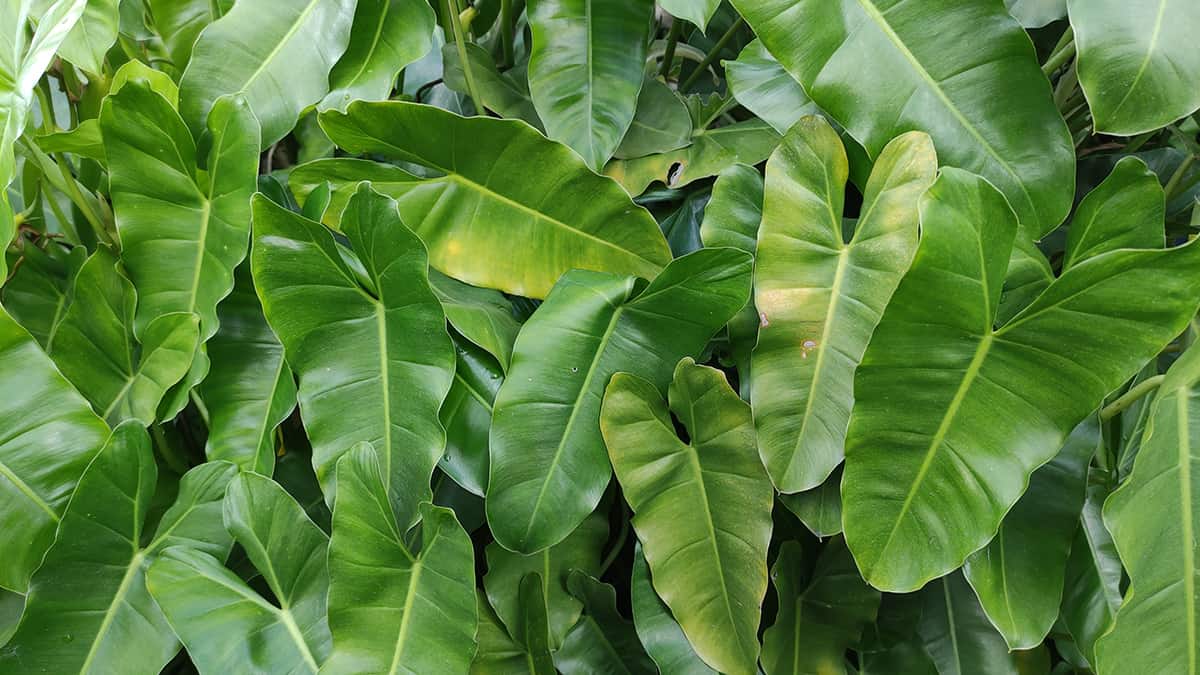
The philodendron spiritus-sancti is an endangered plant that grows only in Espirito Santo in Brazil. It is believed that there are only 6 examples of this plant left growing in the wild, and they are so treasured that they are kept in a secret location with their own bodyguards, along with 24 hour CCTV in operation to keep them safe and protected. Understandably, these extremely rare plants are among the most expensive of all philodendrons to buy. If you are a collector of rare plants, then this is sure to be on your list.
The philodendron spiritus-sancti is not only incredibly rare, but it also has a very unusual look which adds to its appeal. It produces pendant-like leaves shaped like arrows, with a dark green color and waxy texture.
The foliage will typically grow to lengths of 2 feet in the wild. If you are lucky enough to own one of these plants, which can sell for as much as $20,000, then the care is actually quite easy. They are not demanding plants, preferring around 50% humidity, dappled lighting, and moderately moist soil.
Philodendron billietiae variegata
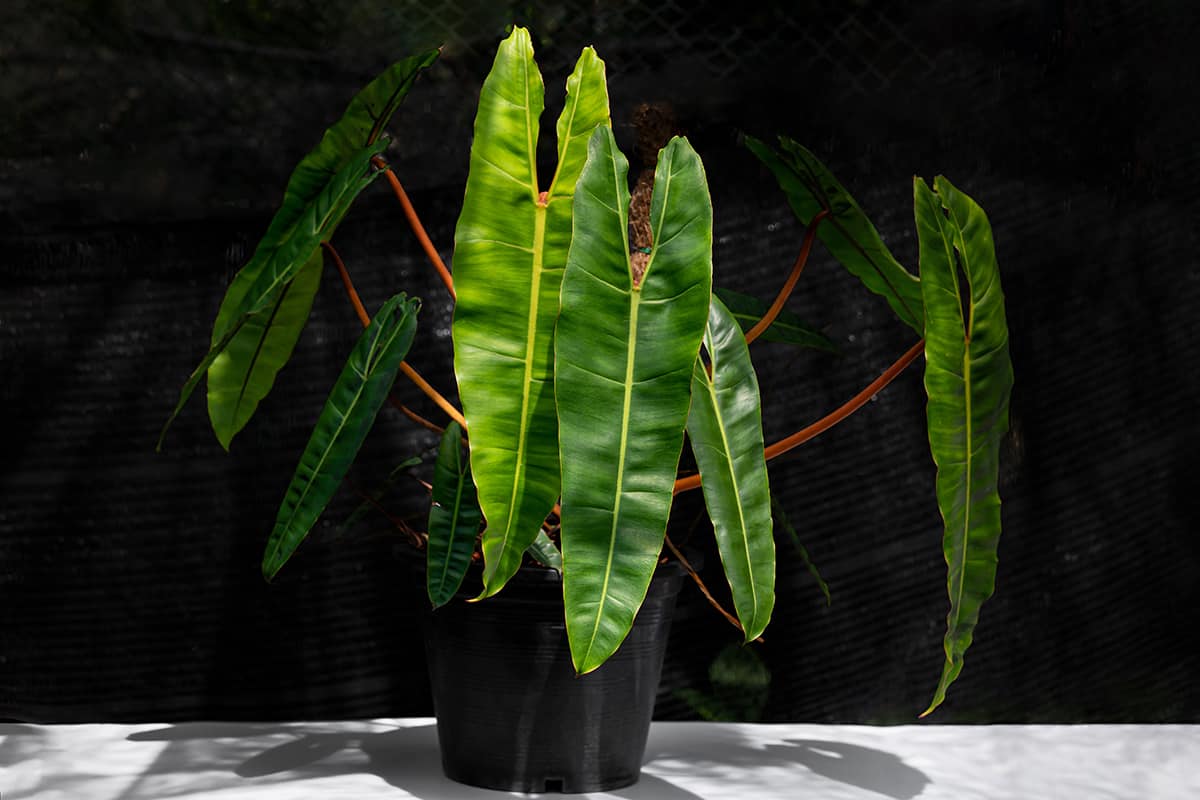
The philodendron billietiae is a rare species of philodendron, but the variegated variety is even more exceptional. Philodendron billetiae are large, upright plants that grow natively in Brazil and French Guiana.
They are scarcely found in the wild and, as such, are regarded as reasonably rare specimens; however, the variegated versions are much rarer and extremely hard to come by. It is estimated that there is a ratio of only one variegated philodendron billietiae for every 100,000 regular philodendron billietiae.
The philodendron billietiae variegata features bright orange stems and dark green leaves with yellow speckles. The foliage is thick and leathery, with a waxy look. Unlike most types of philodendron, this plant prefers quite high levels of light.
In its natural habitat, it grows along the banks of rivers, so it is accustomed to moist environments. Replicate this at home with philodendron billietiae houseplants to allow them to thrive by keeping well-draining soil thoroughly moistened.
Philodendron erubescens ‘Pink Princess’

This variegated plant is extremely popular. It is grown in abundance in its homeland of Colombia, though is considered rare outside of this. However, it is becoming more common as a houseplant as demand for it continues to increase, and growers try to increase supply to match demand.
The plant is easily identifiable by its stunning foliage, which features flecks of cotton candy pink, along with dark green and gray. The pink princess is the result of a naturally occurring hybridization, but unfortunately, it does have the capacity to return back to its non-variegated coloring at any point since it is quite unstable.
If you live in a warm climate, you can grow this plant in the garden or keep it as a houseplant in cooler climates. It is easy to care for, preparing moderate dappled light and medium moisture. In the wild, this plant grows best in partial shade, so avoid positioning it in direct sun.
Philodendron hastatum ‘Silver Sword’
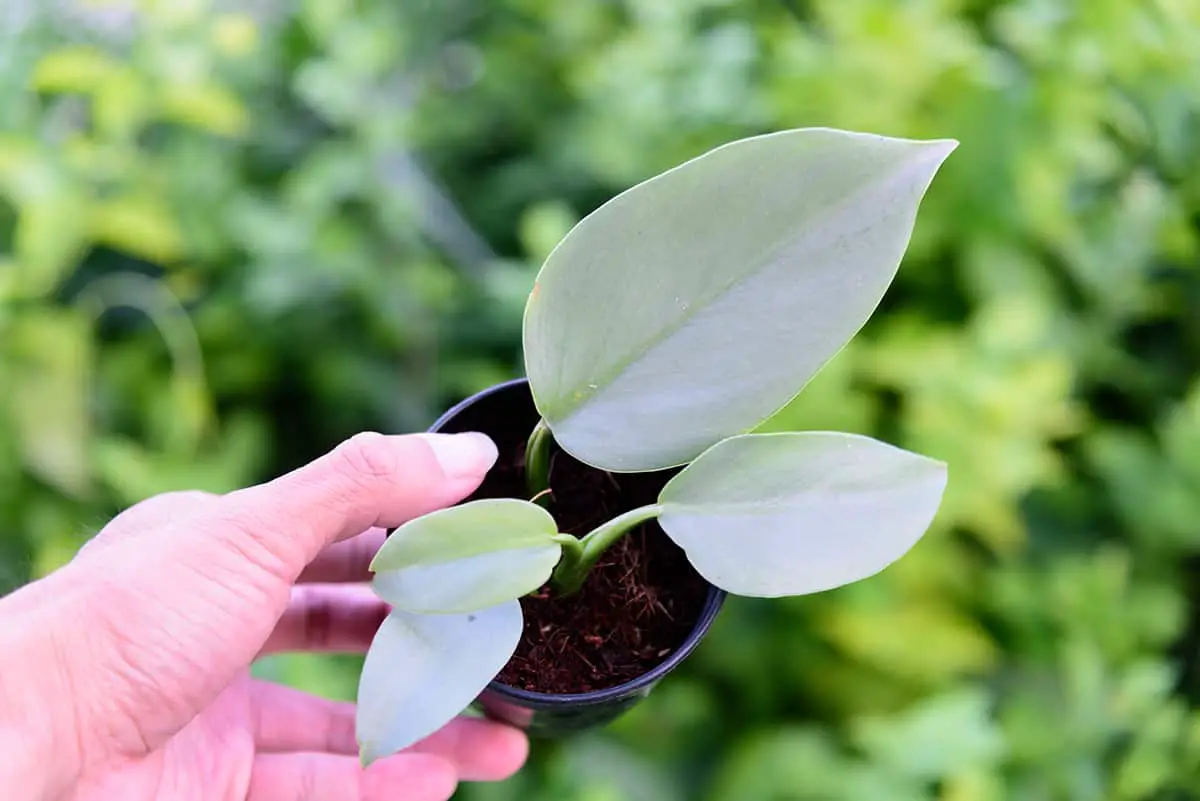
This is an endangered species of philodendron that hails from the rainforests of Brazil. It has gained popularity as a houseplant so you may be able to find it for sale in nurseries or in online plant stores, but its rarity means that it can demand a high price.
The plant name ‘hastatum’ translates from Latin to ‘sword-shaped’, which will make sense when you see the foliage, which is shaped just like swords. The silver sword variety has green leaves which have an almost mirror-like shine, making them appear silver and reflective.
This is a truly stunning plant that is surprisingly easy to care for. In its natural habitat, it grows beneath the shade of trees, so keep it in a partially shaded environment with no more than 3 hours of bright light each day.
The silver sword philodendron is accustomed to growing in moist soil, so ensure yours is potted in a reasonably well-draining soil that will be able to hold some moisture around the roots of the plant but not so much that root rot becomes an issue.
Philodendron mamei
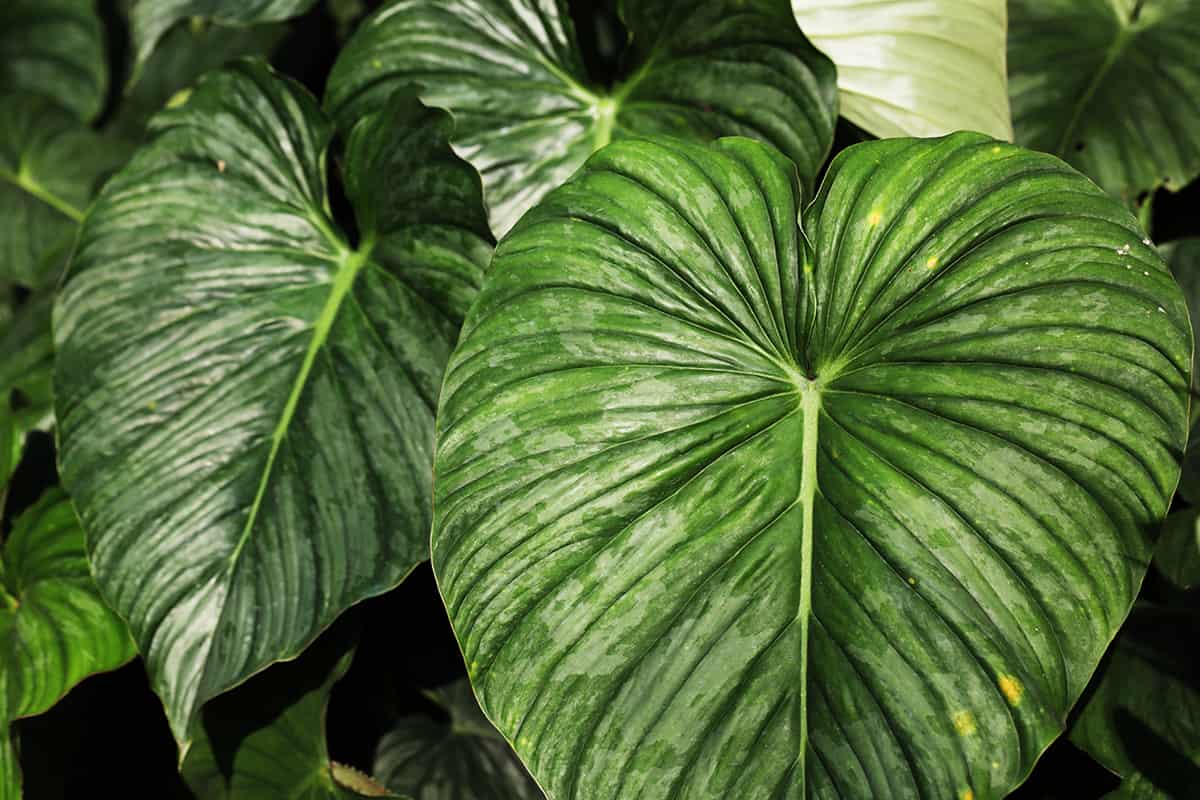
This is a rare species of philodendron that was first discovered in Ecuador in the 19th century. It was once extremely hard to find, though you are now able to buy these plants from specialist nurseries and online stores.
Philodendron mamei is more commonly known as the silver cloud philodendron because of the shimmering cloud-like markings on the leaves. It also goes by the name of quilted leaf philodendron because of the way the leaves are slightly ruffled, giving them a quilted appearance.
This plant produces a vine that can grow as a climber, though in the wild, it is more commonly a creeper that trails across the ground of the rainforest. When grown as a houseplant, it works well as a trailing plant over the edge of the shelf or from a hanging plant pot.
As an indoor plant, you can expect the silver cloud philodendron to span up to 3 feet in length, and when grown outdoors, it will exceed this. It likes to be kept in consistently moist, well-draining soil and enjoy medium to bright levels of light.
